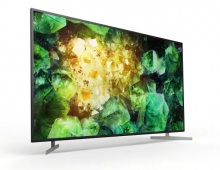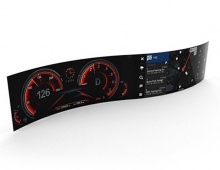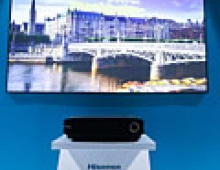
U.S. Buyers Seems to Shrug Off 3D, Internet TVs
U.S. largest electronics chain Best Buy has reported poor Q3 results, as 2010 is likely to be a very difficult one for most consumer electronics categories.
Features like 3D screens and Internet connectivity have failed to inspire U.S. television shoppers and it seems that
Sony, Samsung and Sharp have failed to attract buyers with their fancy features such as razor-thin, Internet LED TVs.
On Tuesday, Best Buy Co Inc Chief Executive Brian Dunn told analysts that sales of 3D TVs had fallen behind industry expectations.
The company noted that the U.S. segment?s revenue declined more than expected, driven primarily by larger than expected industry declines in key U.S. consumer electronics categories for the three months ended October 31, 2010, as well as a decline in the company?s estimated domestic market share for such period. The Domestic segment experienced a low-double digit comparable store sales decline in TVs and entertainment hardware and software. The company noted that the U.S. comparable store sales decline in TVs was driven by a low-double digit decline in unit sales and a mid-single digit price decline as the industry continued to experience softness during the quarter. These declines were partially offset by a low double-digit comparable store sales increase in mobile phones, driven primarily by an increase in the mix of smart phone sales and a mid-single digit increase in mobile computing, driven by strength in tablet computers.
The company estimates that its U.S. market share declined 110 basis points versus the comparable period last year for the three months ended October 31, 2010. The decline was driven primarily by declines in TVs, mobile computing and gaming software. Based on fiscal year-to-date trends, the company now estimates that its U.S. market share will decline for the full fiscal year as compared to the prior fiscal year.
"Best Buy?s poor results today are not a glimpse into the future but a mirror into the past," said Stephen Baker, NPD's Vice President, Industry Analysis, commentinf on Best Buy's Q3 results. "As we have been saying for much of 2010 this year is likely to be a very difficult one for most consumer electronics categories. Very high penetration rates and the effect of two years of growth above the overall retail economy have put consumer electronics ahead of the curve. It is now time that the rest of the market catches up," he said.
"New customers are more likely to focus on entry-level, low-cost products and replacement purchases as opposed to additions to their home installed base," he added.
"It is worth reminding ourselves that as CE has moved away from its position as a luxury, discretionary purchase and towards the role of household necessity our results have become more tuned to the overall economy, and in a saturated marketplace it therefore becomes a postponable purchase, when a necessity just works and does what it is supposed to consumers are less likely to replace it, regardless of the technological benefit. What is notable is that the two strongest areas for Best Buy, mobile phones and tablets, are both blazing new ground, attracting new customers to new product ownership and usage paradigms. These are the product categories offering that new user paradigm that is the future of CE. And as that future gets closer to the present we will likely see those efforts pay off."
On Tuesday, Best Buy Co Inc Chief Executive Brian Dunn told analysts that sales of 3D TVs had fallen behind industry expectations.
The company noted that the U.S. segment?s revenue declined more than expected, driven primarily by larger than expected industry declines in key U.S. consumer electronics categories for the three months ended October 31, 2010, as well as a decline in the company?s estimated domestic market share for such period. The Domestic segment experienced a low-double digit comparable store sales decline in TVs and entertainment hardware and software. The company noted that the U.S. comparable store sales decline in TVs was driven by a low-double digit decline in unit sales and a mid-single digit price decline as the industry continued to experience softness during the quarter. These declines were partially offset by a low double-digit comparable store sales increase in mobile phones, driven primarily by an increase in the mix of smart phone sales and a mid-single digit increase in mobile computing, driven by strength in tablet computers.
The company estimates that its U.S. market share declined 110 basis points versus the comparable period last year for the three months ended October 31, 2010. The decline was driven primarily by declines in TVs, mobile computing and gaming software. Based on fiscal year-to-date trends, the company now estimates that its U.S. market share will decline for the full fiscal year as compared to the prior fiscal year.
"Best Buy?s poor results today are not a glimpse into the future but a mirror into the past," said Stephen Baker, NPD's Vice President, Industry Analysis, commentinf on Best Buy's Q3 results. "As we have been saying for much of 2010 this year is likely to be a very difficult one for most consumer electronics categories. Very high penetration rates and the effect of two years of growth above the overall retail economy have put consumer electronics ahead of the curve. It is now time that the rest of the market catches up," he said.
"New customers are more likely to focus on entry-level, low-cost products and replacement purchases as opposed to additions to their home installed base," he added.
"It is worth reminding ourselves that as CE has moved away from its position as a luxury, discretionary purchase and towards the role of household necessity our results have become more tuned to the overall economy, and in a saturated marketplace it therefore becomes a postponable purchase, when a necessity just works and does what it is supposed to consumers are less likely to replace it, regardless of the technological benefit. What is notable is that the two strongest areas for Best Buy, mobile phones and tablets, are both blazing new ground, attracting new customers to new product ownership and usage paradigms. These are the product categories offering that new user paradigm that is the future of CE. And as that future gets closer to the present we will likely see those efforts pay off."




















